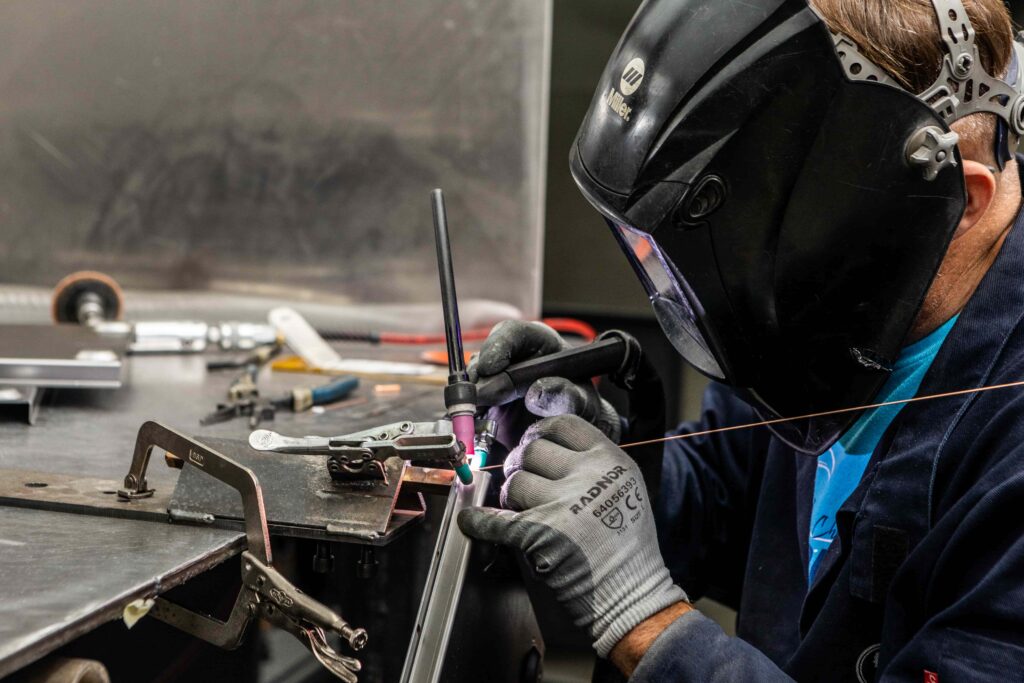Specialized Welding Inspection Service for Pipe Projects
Specialized Welding Inspection Service for Pipe Projects
Blog Article
Understanding the Numerous Sorts Of Welding Techniques and Solutions Readily Available

Overview of Welding Techniques
Welding strategies encompass a varied variety of approaches utilized to join products together permanently. One typical method is arc welding, which involves creating an electric arc in between an electrode and the base material to thaw and fuse them together. This method is versatile and can be used with various steels, making it one of the most extensively used welding procedures.

In addition, TIG welding, or Gas Tungsten Arc Welding (GTAW), is a clean and precise welding technique that makes use of a non-consumable tungsten electrode to create the weld. TIG welding is frequently utilized for thinner materials and provides excellent control over the welding procedure. On the whole, understanding these various welding techniques is crucial for picking the most suitable approach for various jobs.
Generally Used Welding Approaches
A variety of generally made use of methods are utilized in the area of welding to properly join materials with each other. Among one of the most widely used strategies is Gas Steel Arc Welding (GMAW), likewise called MIG welding. This technique utilizes a wire electrode that is fed via a welding weapon, in addition to a shielding gas to protect the weld from impurities in the air. An additional typical approach is Protected Steel Arc Welding (SMAW), or stick welding, which makes use of a flux-coated electrode to develop the weld. Tungsten Inert Gas (TIG) welding is favored for its accuracy and convenience, utilizing a non-consumable tungsten electrode to produce the weld. Flux-Cored Arc Welding (FCAW) is generally used in commercial setups because of its high welding rate and portability. Additionally, Submerged Arc Welding (SAW) is ideal for developing deep welds on thick materials. These commonly made use of welding methods accommodate different needs and products, giving alternatives for numerous welding applications.
Advanced Welding Provider
Building upon the structure of generally utilized welding techniques, the realm of innovative welding solutions incorporates innovative strategies and innovations that push the boundaries of precision and performance in material signing up with procedures. Advanced welding services frequently entail specialized methods such as laser welding, electron beam of light welding, and friction mix welding. Friction mix welding, a solid-state joining process, allows the welding of products that are challenging to fuse utilizing standard approaches, like light weight aluminum and copper.
Specialized Welding Strategies

One more specialized welding technique is laser beam welding, where a very focused light beam of light is utilized to join steels with minimal heat-affected areas and distortion. This approach is commonly employed in industries needing high precision and sanitation, such as electronics and medical tool manufacturing. Furthermore, eruptive welding is an one-of-a-kind strategy that utilizes regulated dynamites to bond dissimilar metals with each other, creating solid and trusted joints. These specialized welding methods showcase the variety and development existing in the area of welding, offering options for a wide variety of industrial applications.

Selecting the Right Welding Refine
Selecting the appropriate welding procedure is paramount in achieving optimum results in metal manufacture and joining procedures. With numerous welding methods available, it is important to consider aspects such as the kind of metal, density, joint layout, and wanted end result when picking the appropriate welding procedure - Welding Inspection Service. Among the usual welding methods are Gas Metal Arc Welding (GMAW), Shielded Metal Arc Welding (SMAW), Gas Tungsten Arc Welding (GTAW), and Flux-Cored Arc Welding (FCAW) GMAW, also known as MIG welding, appropriates for welding thin to thick metals and is functional in various placements. On the other hand, SMAW, or stick welding, navigate to this website is a trustworthy method for outside and field welding as a result of its transportability and simplicity. GTAW, or TIG welding, is ideal for welding thin materials and gives high-grade and specific welds. FCAW is chosen for welding thick products and is understood for its high welding speeds. Recognizing the qualities of each welding procedure is important in selecting the anonymous most appropriate technique for a particular welding project.
Verdict
In conclusion, comprehending the various sorts of welding strategies and solutions available is crucial for selecting the right technique for a details project. By being aware of the generally used welding techniques, advanced welding services, and specialized methods, individuals can make informed decisions to ensure the success of their welding jobs. It is essential to take into consideration aspects such as products, job demands, and budget plan when choosing one of the most appropriate welding process.
From standard methods like stick welding to advanced procedures such as laser welding, the globe of welding provides a plethora of choices for joining steels with each other.In addition, TIG welding, or Gas Tungsten Arc Welding (GTAW), is a tidy and exact welding approach that makes use of a non-consumable tungsten electrode to produce the weld. Advanced welding solutions typically entail specialized approaches such as laser welding, electron beam of light welding, and friction stir welding. Among the typical welding methods are Gas Metal Arc Welding Get More Information (GMAW), Protected Steel Arc Welding (SMAW), Gas Tungsten Arc Welding (GTAW), and Flux-Cored Arc Welding (FCAW) By being mindful of the commonly used welding methods, advanced welding solutions, and specialized methods, individuals can make informed choices to guarantee the success of their welding jobs.
Report this page